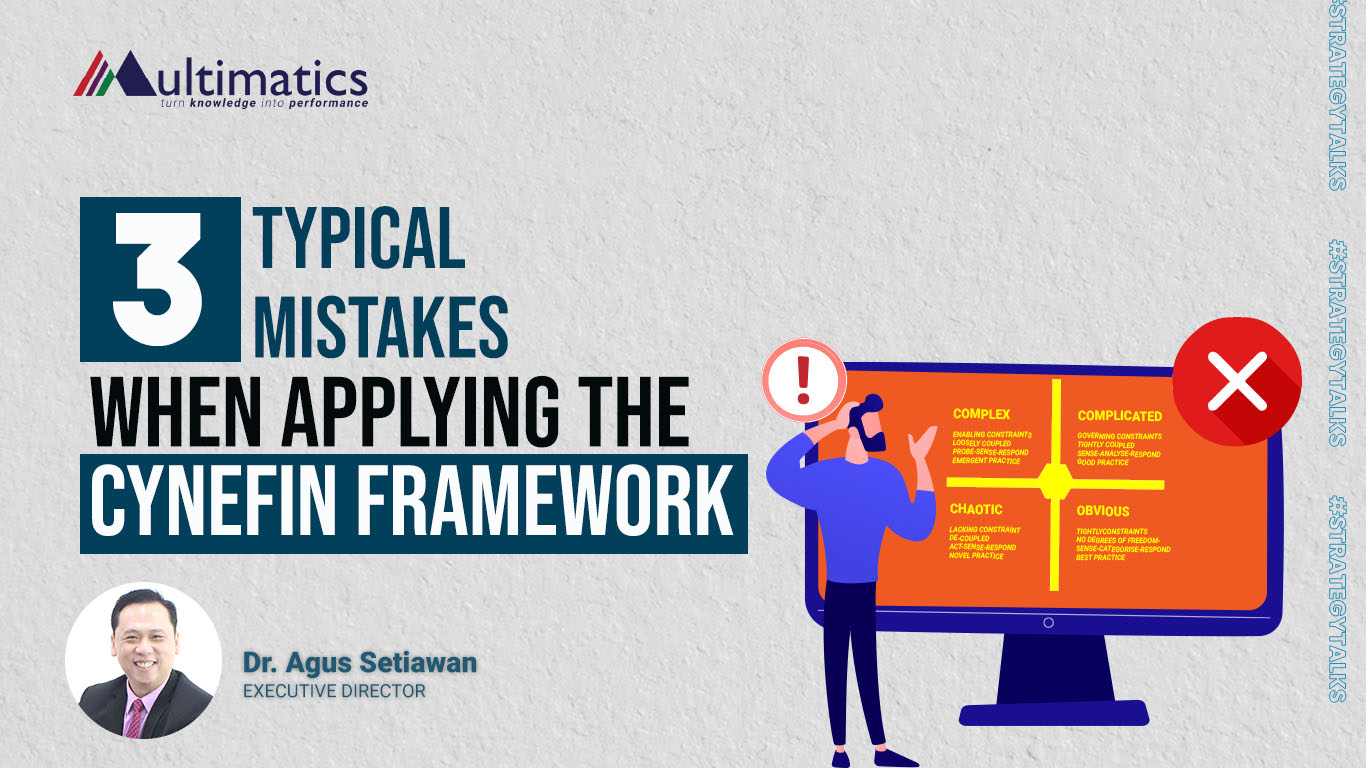

Dr. Agus Setiawan
PhD Holder and result-oriented Director with 25 years experience with involvement in all levels of Business Strategy, Sales and Marketing, Managing Project and Product Development. Aside of managing a company, he is also the best corporate trainer and public speaker in seminar and conference.
3 Typical Mistakes When Applying The Cynefin Framework
Tuesday, 21 September 2021
In the complex environment of the current market, actions must depend on the situation in order to make a better decision. The Cynefin framework is a pragmatic decision-making model, which focuses on solving the situation currently at hand and not on the future success of a project. If you do not keep this in mind, problems may arise and the project could fail entirely. Further, these are typical mistakes when applying the cynefin framework, namely.
Applying The Simple Strategy For A Complex Situation
Simple situations are easier to deal with. In simple situations, the cause-and-effect relationships are clear, and the problem-solving approach is easy to identify and pursue. A lot of professionals, therefore, tend to distort and simplify the situation at play. This can result in fatal decisions being made, thereby threatening the success of the project.
Tackling A Complex Situation Using The Strategies For A Complicated Situation
Complicated situations have a clear cause-and-effect relationship. However, if you use this approach in a complex system, where there are too many variables to identify the cause-and-effect relationship, there is a great risk of getting caught up in analysis loops and ineffective processes. Agile is the best suited toward complex situations.
Failing To Recognize A Chaotic Situation
If the system becomes chaotic, quick response and the right management technique are vital to get on top of the chaotic situation as quickly as possible. If, as a professional, you act too hesitantly or enact rules that are less than ideal for the company, it can lead to long-term damage.
Conclusion
To sum up, there are typical mistakes found when applying the cynefin framework. By understanding these typical mistakes when applying cynefin framework above, it will be beneficial to maximize your skills in decision making. This also to help you assess your situation more accurately and respond appropriately, which also could improve organizational efficiency and productivity.
Reference:
Kurtz, C., & Snowden, D. (2003). The new dynamics of strategy: Sense-making in a complex and complicated world. IBM Systems Journal, 42(3), 462-483. doi: 10.1147/sj.423.0462
A Leader’s Framework for Decision Making. (2021). Retrieved 17 September 2021, from https://hbr.org/2007/11/a-leaders-framework-for-decision-making